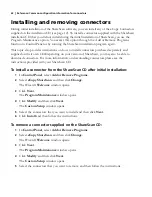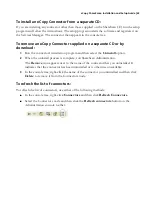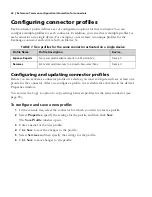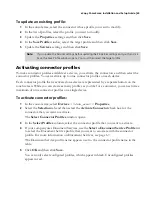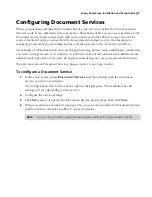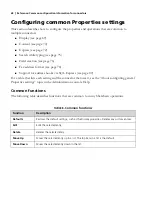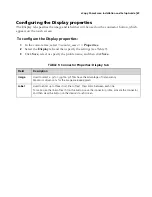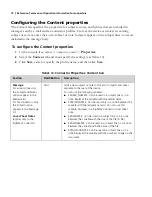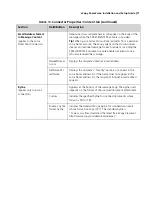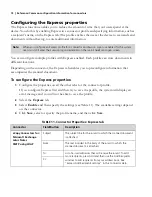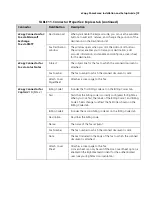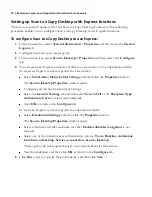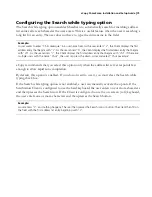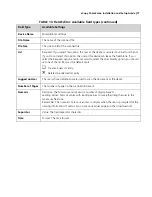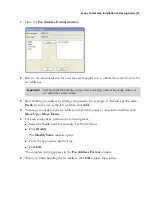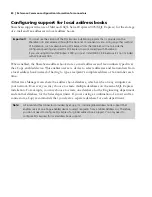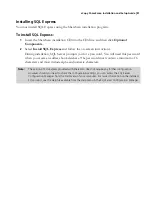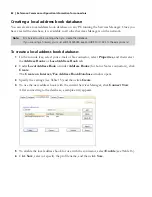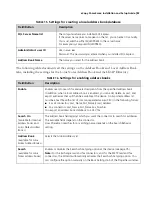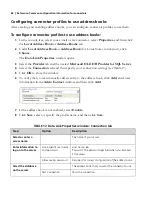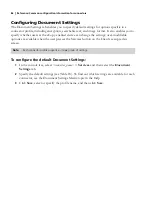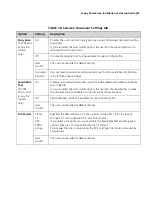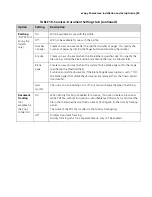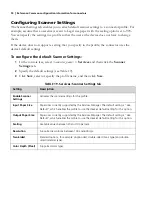
76
|
Reference: Conmmon configuration information for connectors
Configuring file name and index fields
You use the Field Editor or the Index Field Editor to add or edit fields that the user sees in the
Client. When you create file name fields or index fields, you select the field type in the editor.
The following fields are available in the Field Editor window:
The following table lists all available field types. Each editor supports a unique group of field
types.
TABLE 12. Field Editor options
Section
Field
Description
Properties
Name
The identifier for the field (15 characters maximum).
Type
The field type (see Table 13).
Default
The default value (optional).
User modify
Enables the user to modify the default value.
Field Size
Minimum
The minimum number of characters allowed.
Maximum
The maximum number of characters allowed.
Remember
The number of most recently used values to display in the drop-down list.
TABLE 13. Field Editor: Available field types
Field Type
Available Settings
Alphanumeric
Field size: The minimum and maximum number of characters allowed.
Remember: The number of previous entries to display when the user is prompted for the
naming information. If set to zero, no previous values appear in the drop-down list.
Batch Number
Length: The maximum number of digits allowed for the batch number, including leading
zeroes.
Leading zeroes: Pads all values with leading zeroes to make their length equal to the
maximum field size. For example, if you specify “3” in the Length field and you enable
leading zeroes, batches are numbered “001”, “002”, … , “010”, “011”, … , “100”,
“101”, … , “999”.
If you do not enable leading zeroes, batches are numbered “1”, “2”, etc.
Database
The database location in which the list of values for the field is stored. Only available in
Quick Connect.
Date
Format: The appropriate date format according to local conventions.
Destination Path
The path to the network location where the document is stored.

